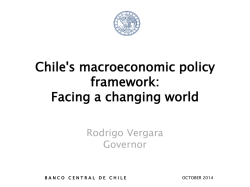
Themes-etc.-DOM
Themes, Style and Historical Context in Death of a Maiden Atonement and Forgiveness While there exists no acceptable rationale for the violence of the military regime, Paulina implies that she can forgive the individual for being fallible: she promises to release Miranda if he will confess to torturing and raping her. Miranda does not genuinely appear to ask for forgiveness; he does so only in the context of a confession which may be falsified. Paulina, although she ultimately chooses not to kill Miranda, does not forgive him, either. The play suggests that despite the lingering pam of political oppression, there is no concrete act that can atone for past wrongs. Death and the Maiden The title of Dorfman's play comes from the quartet by Schubert which Paulina associates with her abduction and torture. She finds a cassette of this music in Miranda's car. The piece, String Quartet No. 14 inD minor (D. 810), takes the name "Death and the Maiden" from a Schubert song that is quoted in it. The theme is common in folk music such as the English song "Death and the Lady," in which a rich lady who has failed to bribe Death into granting her a few more years of life sings of having been betrayed by him. The theme of the song (hence the dramatic context for Schubert's quartet) is reflected in the characters themselves, with the shadowy doctor who raped and tortured Paulina existing as a kind of Death figure in her memory. However, Dorfman's play presents a reversal on the theme-‐-‐ if the audience agrees that Paulina has found the right doctor, that is-‐-‐for in the present circumstance it is the Maiden (Paulina) who holds the power of life over Death (Miranda). Doubt and Ambiguity Paulina does not doubt that Roberto Miranda is the doctor who tortured and raped her years before or that he deserves to be tried and punished for these crimes. She is also convinced that she is the only person who can administer a punishment to fit the crime. One of the related themes of Death and the Maiden, however, is the lingering ambiguity which troubles a society attempting to rectify wrongs from a turbulent era in its past. Nagging questions re-‐mam: who can be sure the correct people are being tried, and what constitutes just punishment? The play examines the consequences of such justice, provoking questions as to the effects such a process will have not only on the accused but on the accuser. Freedom The play contrasts the present era to the repressive military regime which has recently ended. At the same time, it makes the complex point that in this fragile period of political transition, the legacy of the past still haunts people, preventing them from being truly free. Paulina mockingly questions the value of freedom in a society which has only provisionally returned to democracy: "Isn't that what this transition is all about? The Commission can investigate crimes but nobody is punished for them?... There's freedom to say anything you want as long as you don't say everything you want?" While political freedom is one major issue in the play, there is also the theme of emotional freedom. "You're still a prisoner," Gerardo tells Paulina, "you stayed behind with them, locked in that basement." Gerardo encourages her to "free yourself from them" in order to put her mind at rest. Paulina, however, is insulted by the implication that her only option is to forget her pain. Yet her solution is no less absolute: she feels she can only put her mind at rest by seeking punishment for her tormentors. In the end, however, she stops short of administering the ultimate punishment of death. It has been speculated that while this action does not liberate her from the pam of her torture and rape, it does grant her freedom from the savagery that afflicted her tormentors. Justice and Injustice Death and the Maiden contrasts ideal and practical concepts of justice. Both Paulina and Gerardo perceive the considerable injustices exerted by the former military regime, but they differ in their ideas of how justice can best be served under present circumstances. Gerardo believes in the efficacy of the commission to which he has been appointed, feeling that justice will be served by faithfully investigating human rights abuses and then turning the findings over to the country's courts. Paulina, however, is suspicious of the loyalties of those "same judges who never intervened to save one life in seventeen years of dictatorship." To her mind, justice cannot possibly be served through the channels which presently exist, so she resolutely takes the law into her own hands. The brutality of her past experience is undoubtedly at the root of her position; when Gerardo pleads with her at one point to be "reasonable," she bitterly responds: "You be reasonable. They never did anything to you." Memory and Reminiscence Dorfman commented in an interview with Carlos Reyes on the Amnesty International homepage: "Memory is a constant obsession for me," observing that a memory of the past is a counter against those, like the military rulers, "who would obliterate others, who would forget them, ignore them, neglect them, erase them from the earth." Dorfman's "obsession" shows in his characterization of Paulina, whose strong memories of being raped and tortured still haunt her and provide a challenge to the historical revisionists who would claim that such events did not take place. Establishing a history of the victims will be an important step towards national reconciliation, but the question of just how satisfying such a process can be to Paulina and others like her is one of the more difficult issues presented in the play. Morality and Ethics The immorality of the past military regime is not debated in Death and the Maiden; the discussion of Paulina's torment and the mention of other cases of extra-‐judicial abduction, torture, and murder are enough to establish the context. The central ethical issue of the play is whether Paulina, by choosing to try-‐-‐and punish-‐-‐Miranda herself, is merely replicating the same injustices of the military regime. "We can't use their methods," Gerardo comments. Paulina agrees in concept but feels that the circumstances are different. She also argues that she is giving Miranda the opportunity to defend himself, a privilege she was not granted. Style Death and the Maiden is highly realistic in form and structure, with a plot that rapidly unfolds in linear progression, characters that are fully-‐realized individuals, and a fixed, recognizable setting. Dorfman breaks with this basic structure only at the end of the play, when the setting jumps to a concert hall several months later. At this point, the playwright introduces an expressionistic device, a mirror aimed at the audience, to bring thematic unity to the piece. A fully realistic play would present some kind of resolution to the dramatic conflict but this is hardly possible in Death and the Maiden. Indeed, the play suggests precisely the difficulty of resolving the social issue which is at its heart: how can a society reconcile itself with its violent past and, somehow, move forward? While it is the tendency of most theater critics to compare the work of different playwrights in order to give their readers a point of reference for a particular work, this has rarely been the case in the published criticism of Death and the Maiden. Critics have not been so focused on applying labels to Dorfman's theatrical technique, perhaps because they do not consider Dorfman-‐-‐an intellectual and academic internationally known for his essays, novels, and poetry-‐-‐to be primarily a playwright. Additionally, the content and political context of Death and the Maiden being so novel to English and American audiences, critics have focused more on these elements than on categorizing Dorfman's dramatic style. As an exception to this tendency, one playwright with whom Dorfman is often related is Harold Pinter. The British playwright has remained an important touchstone for Dorfman; his first book was an academic study of the politics of oppression in Pinter's early play The Room, and he dedicates Death and the Maiden to Pinter. The connections between the two writers, however, are related more to their political investments than their dramatic techniques. An article by Stephen Gregory in Comparative Drama, for example, suggested how a retrospective reading of Dorfman's study of Pinter illustrates "how it anticipates both the concerns of his later work on Latin America and the issues that will unite the two writers some twenty years after its publication." Dorfman hardly works in the style of Pinter, a play wnght associated with the Theatre of the Absurd. Literally meaning "out of harmony," the term absurd was the existentialist Albert Camus's designation for the situation of modern men and women whose lives lack meaning as they drift in an inhuman universe. Death and the Maiden explores a political context which could properly be described as absurd, as a military regime prevents individuals from exerting any control over their own destiny. In terms of theatrical technique, however, Dorfman's play remains realistic in form without the stylistic exaggeration of Pinter's work, or that of other playwrights, such as Samuel Beckett (Waiting for Godot) and Eugene Ionesco {The Bald Soprano), who are usually labeled as absurdists. While Death and the Maiden resists comparison with the work of contemporary playwrights, many have observed that it functions something like Greek tragedy. "More than one critic," wrote John Butt in the Times Literary Supplement, "has commented on this production's formal perfection, the way it unwinds with a remorseless inevitability that recalls the finest classical tragedy." In form, of course, the play differs from tragedy on many levels: it lacks, for example, the downfall and death of a hero or heroine and the "anagnorisis" or self-‐recognition on the part of that character about the mistake that led to his or her demise. Still, the parallels exist; Mimi Kramer noted in the New Yorker that "the play observes classical rules about unity of time and place, and about offstage violence." Dorfman himself has used the term tragedy to refer to the work, responding to the suggestion that the play functions as political propaganda by saying in Index on Censorship that "tragedies are never propaganda, ever." This comment is merely a suggestion of the thematic and dramatic complexity of the work, but Dorfman has explored the idea of tragedy further by examining the concept of catharsis, the social function of classical tragedy by which audiences would purge themselves of certain emotions. "The play," Dorfman stated in the same article, "is not just a denunciation of how bad torture is. It aims to help purge ourselves of pity and terror." In Greek society, the catharsis of tragedy helped to unify people, and Dorfman implies a hope that his play might serve the same role in Chilean society, further enabling the process of reconciliation with that country's past atrocities. The device of the mirror at the conclusion of the play contributes most strongly to the process of catharsis. In an interview in the London Times, Dorfman said, in reference to the audience, that Death and the Maiden "is not a play about somebody else, it's a play about them." The mirror coming down is a device which implicates them in the moral dilemma. "People are going to watch themselves and ask: 'what would I do, who am I in the midst of all this'" The mirror is also the element which separates the play from its realistic form ana structure; it leaves the audience with a powerful image at the conclusion of a play whose central conflict remains otherwise unresolved Historical Context Ariel Dorfman carefully specifies in his stage directions that Death and the Maiden is set in "a country that is probably Chile but could be any country that has given itself a democratic government just after a long period of dictatorship." There is both a specificity and a universality to the play, as many critics have noted, making it extremely topical in the late-‐twentieth century era of tentative political transformation. Frank Rich of the New York Times, for example, called the play a "mousetrap designed to catch the conscience of an international audience at a historic moment when many more nations than Chile are moving from totalitarian terror to fragile freedom." John Butt similarly found the play "timely," saying that it catches the audience "in a neat moral trap" by making them "confront choices that most would presumably leave to the inhabitants of remote and less favoured countries." Among the many Latin American countries which in recent decades have similarly experienced periods of military rule (Guatemala, Brazil, Bolivia), Argentina and Chile are often compared to one another because of their shared history and close geographical proximity in the "Southern Cone" of South America. Both Chile, following Augusto Pinochet's military coup, and Argentina, in the years of the military's "Dirty War," were characterized by civil repression, extra-‐judicial abductions and "disappearances," torture, and murder. Familiarity with the modern history of these two countries provides a good basis of understanding for the context of Death and the Maiden. Throughout the first half of the twentieth century in Chile, the political climate swung often between right and left with no government strong enough to effect large scale change. Infrastructure developed slowly and rural poverty became an increasing problem, along with rapid urbanization as desperate populations flooded the city. Some social reforms were achieved in the 1960s, but Chile's politics became increasingly polarized and militant Salvador Allende crept to presidential victory in 1970 with a leftist coalition of socialists, communists, and extremists. Allende's sweeping economic reforms included the state takeover of many private enterprises; the United States was angered by the confiscation of U.S.-‐controlled copper mines and Chile's openly friendly relationship with Cuba, a country with whom America had ceased diplomatic and economic ties. The Chilean military, in a coup orchestrated by General Augusto Pinochet, seized power on September 11, 1973, using air force jets to bomb the presidential palace. (U.S. support of the coup through the Central Intelligence Agency [CIA] has been documented.) Allende died, apparently a suicide, and thousands of his supporters were killed. Pinochet, at the head of a four-‐man ruling junta (a group or council that controls a government), dissolved Chile's congress and repressed-‐-‐often violently-‐-‐political opposition. His government maintained power for the next decade and a half, frequently resorting to terror (including the abduction/tortures to which Paulina was subjected) in order to suppress dissent. A peaceful transfer of presidential power was achieved in 1990 but considerable tension continued between the military and the government concerning the human rights violations of the Pinochet era. Under a constitution written during his regime, Pinochet himself remained army commander until stepping down in March, 1998. Yet after that time he still retained congressional influence with the title of senator for life. Chilean society continues to struggle with the violent legacy of its past, although current president Eduardo Frei has sped the process of reconciliation by accelerating human rights tribunals and inquiries into Chile's "disappeared" (through commissions like the one to which Gerardo has been appointed in Death and the Maiden). Chile's neighbor, Argentina, has likewise seen frequent suppression of democratic processes. The country experienced its first coup in 1930, the government falling toacoalitionof military officers and civilian aristocrats who established a semi-‐fascist state following the growing trend of fascism in Europe. The military undertook a more forceful coup in 1943, one which set out to restructure Argentine culture totally. The goal this time was not the mere suppression of political radicals but the complete eradication of civilian politics. There were to be five more coups between 1943 and 1976, the year in which the military initiated the brutality known as the Dirty War. During this period, Argentina's most influential ruler was Colonel Juan Peron, first elected to the presidency in 1946. Peron was different from his military predecessors in that he sought to integrate the urban working class into his party, although his government retained a strong hand on more hard-‐line radicalism. Peron's partner in everything during the early years of his presidency was his mistress, later his wife, Eva Duarte-‐-‐known popularly as Evita (composer Andrew Lloyd Weber and lyricist Tim Rice would immortalize her in their 1978 musical Evita). She had cunning political instinct, upon which Peron grew to rely. When the military threw Peron over in 1955, many of the social changes he and Evita had initiated remained in place. The legacy of Evita (she died of cancer in 1952), combined with the knowledge that Peron was alive in exile, empowered many to adhere to Peronist ideals, despite the military's attempts to suppress them. Peron was resurrected in 1973 as the economic situation in Argentina continued to worsen, and the public, looking for some positive way out of the military regimes, enthusiastically welcomed his return; he died a mere eight months into his new term as president. A coup on March 24, 1976, overthrew Peron's widow Isabel, president since his death, and a military junta composed of the three commanders in chief of the armed forces installed itself as the government. In the years between the coup and the resumption of democratic elections in 1983, the military fought a vicious and covert war against the people of Argentina, totally restructuring society to eradicate any political consciousness. A system of clandestine concentration camps, numbering over three hundred at their peak, provided the center of an all-‐out policy of abduction, torture, murder, and disposal. Estimates of the dead run as high as thirty thousand, and the lives of the survivors were left destroyed in other ways. As in Chile, following a tenuous return to democracy Argentine society at large continues to struggle with the issue of how to rectify the violence of the past. Activists such as Las Madres de Plaza de Mayo (who daringly initiated protests against the military government while it was still in power) maintain pressure on the current government to investigate human rights abuses, although punishment for many of the perpetrators remains unlikely.
© Copyright 2024



